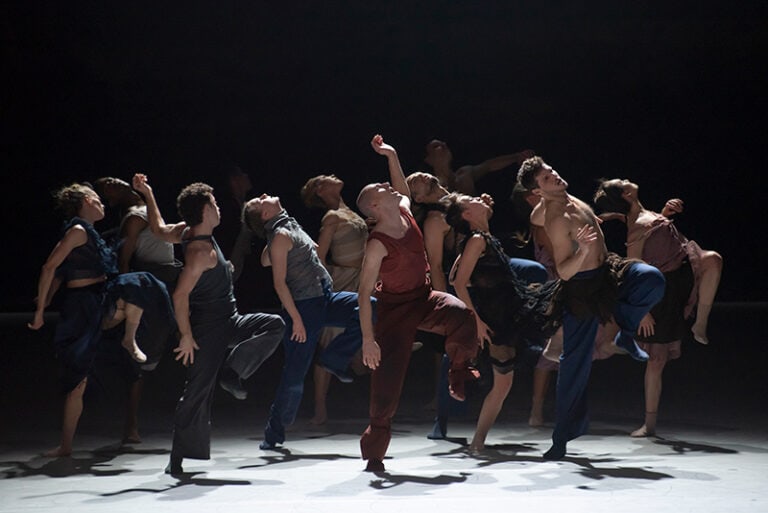
Karin Miller: Digital Art and Cultural Commentary
Anji Connell
South African digital artist Karin Miller’s vibrant artworks invite viewers on an exhilarating journey through emotion and abstraction. Radiating colours and dynamic forms that spark curiosity and reflection.
In a world increasingly influenced by the imagery we consume. The icons we choose reveal deep insights into our aspirations and societal norms. Karin Miller’s art critically examines these modern symbols, exploring the complex relationship between consumerism and identity. By contrasting elements from the fashion industry with traditional religious iconography. She emphasizes the tension between lasting values and fleeting trends.
Her work also reflects the significant impact of social media on our daily lives. Highlighting how the curated versions of ourselves that we project often overshadow our authentic identities consequently. Which we continually strive to express. In her artworks, Karin masterfully blends the ornate aesthetics of classical art with contemporary symbols. Challenging viewers to rethink what truly defines their identities in an era driven by visual culture. Just as saints of the past were revered and depicted with meticulous detail in medieval art. The “icons” of today wield a different kind of power—one that can inspire but also confine.
Karin Miller’s rich cultural heritage and South African roots significantly influence her exploration of identity, extending into her fascination with the natural world. Her love for plants and flowers, particularly as seen through classic botanical illustrations, serves as an anchor of authenticity amidst the chaos of modern branding. These delicate and honest depictions celebrate true beauty in a society that often favours polished perfection.
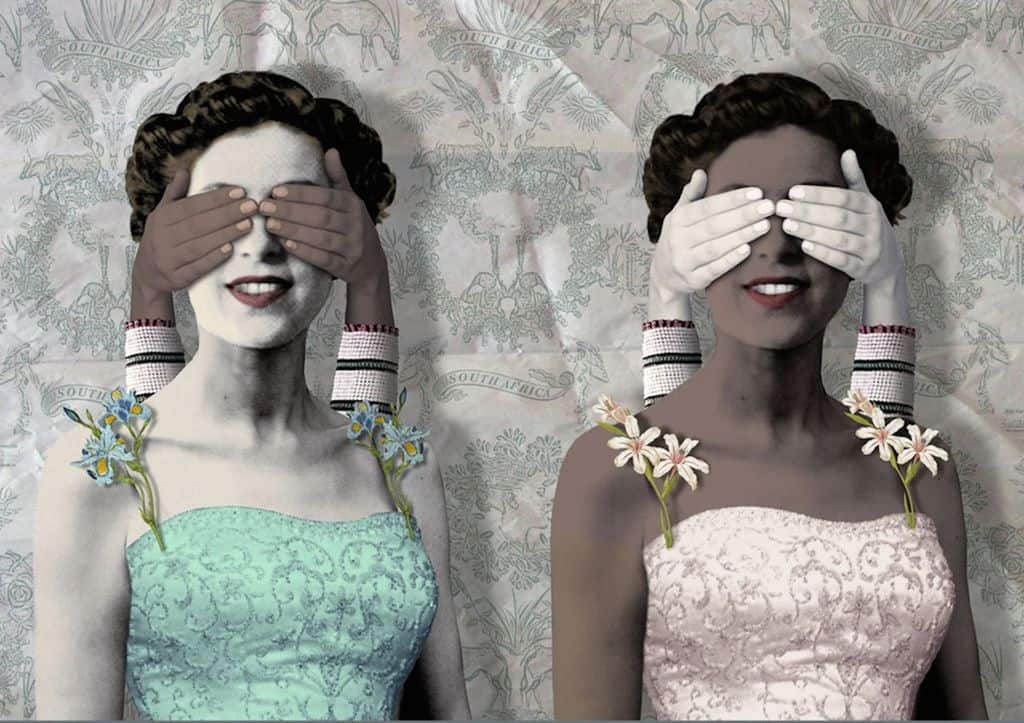
By merging these diverse elements, she cultivates an immersive dialogue that encourages viewers to reflect on their personal connections with these symbols, prompting them to question the values they represent.
In Dialogue with Karin Miller.
Does your South African heritage inform your artistic vision and creative process?
I was born into an Afrikaans-speaking home during apartheid. My early childhood was warm and secure, anchored by my father, a brilliant internist, was loved by his patients. My sense of safety shattered when my parents separated when I was 13, igniting a bitter conflict that persisted throughout their lives. I was immersed in a strict religious culture, where the values preached often clashed with reality. This disconnect prompted me to question both the authority of the church and the moral foundation of apartheid.
Growing up under apartheid deeply impacted me, inspiring my focus on celebrating the resilience and strength of Black women. My art emerged from this environment, teaching me that things are seldom straightforward. I use religious icons not to express faith but to challenge power and societal narratives. While I’ve moved away from overt political statements, themes of strength remain interwoven in my work. Alongside these themes, I developed a quiet fascination with my mother’s interest in the British Royal Family, which led to my own obsession with Queen Elizabeth II. This obsession has allowed me to explore enduring public narratives.
Could you tell us about the key factors that led you to make the shift from graphic design to pursuing a career in fine art?
I studied Graphic Design, which gave me a strong visual foundation. For many years I worked in design and illustration before gradually moving into fine art. It wasn’t a sudden decision — more a slow unfolding. One day I realised I was no longer just designing but layering stories, history, and symbolism into images that felt like art.
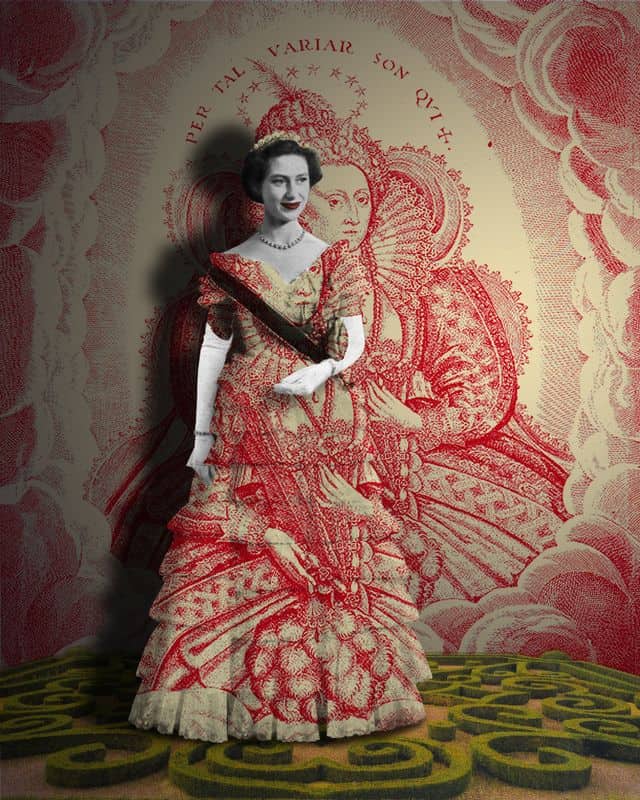
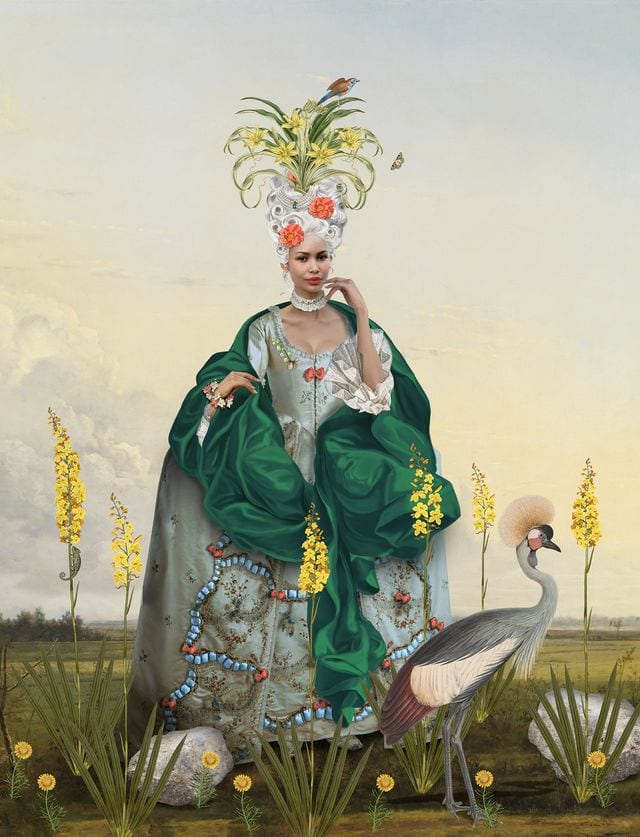
What does your creative process look like, and in what ways does it shape the artwork you produce?
My process moves between structure and instinct. I collect fragments, objects, gestures, flowers, and found images and slowly layer them until they begin to speak to each other. Some works arrive almost whole, others resist and take time. I try to leave space for accident and surprise. I’ve always loved anything original and new. When Photoshop first appeared, it was my favourite toy. I could lose myself in its possibilities for hours. These days, much of what once felt fresh has become mainstream, and the novelty has worn off. I find myself searching for a new medium or challenge that will catch my imagination again.
Can you explain your approach to creating figures in your artwork? Are they inspired by real people, imagined personas, or a blend of both?
Both. Sometimes they’re drawn from photographs or actual sitters; other times they emerge from a composite of memory, imagination, and symbolism.
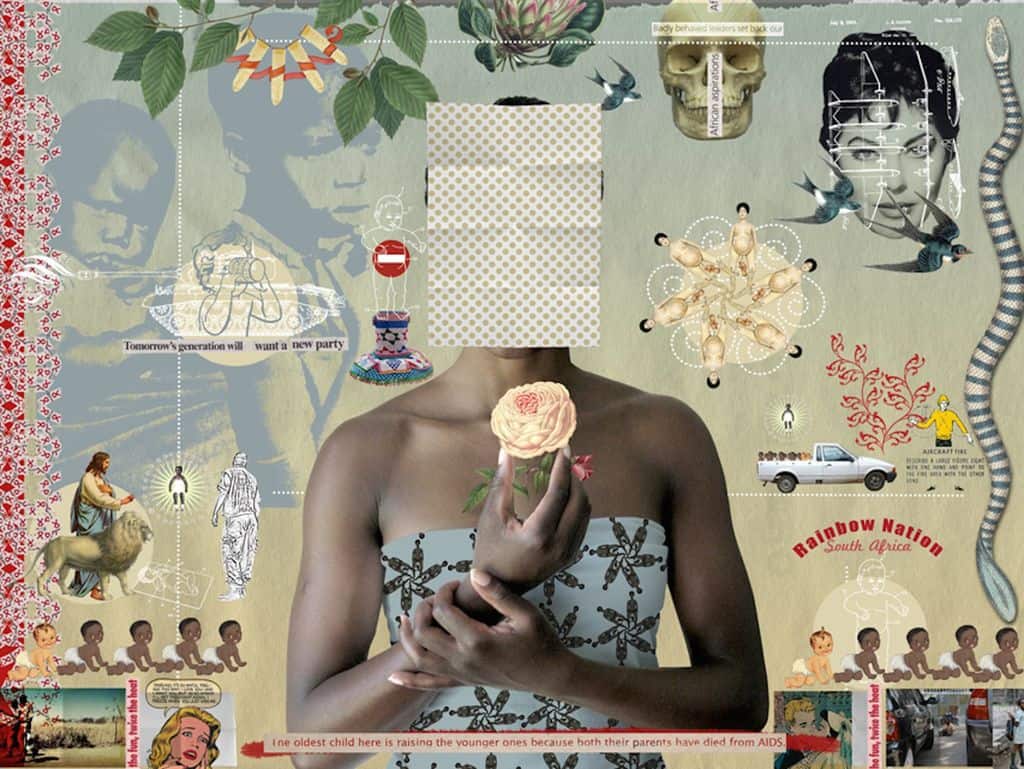
I notice symbolism plays a significant role in your artwork. Could you share some insights on how these symbols contribute to the Karin Miller overall message?
Symbolism is the thread that runs through my work — pearls, handbags, flowers, and reliquary-like objects hold layers of meaning about fragility, strength, desire, and spirituality. They allow me to say things indirectly, which often feels truer than speaking plainly.
What key themes resonate throughout your artwork, and how do they manifest in the narratives you explore?
Silence and voice, vulnerability and strength, concealment and revelation, beauty and critique. Much of my work circles around women’s lives, both intimate and political.
Do you see yourself as a storyteller through your artwork, and if so, how do you weave together the fragments of history and everyday life?
Yes, though not in a straight line. I gather fragments of history and everyday life, often mysterious even to me. I pick up traces and try to make sense of the chaos, knowing those before us lived as vividly as we do now.
What role do you believe art plays in society, and how do you see your work contributing to that role?
Art slows us down. It makes us see, reflect, and feel in ways that everyday life often doesn’t allow. For me, art is a mirror and a stage where contradictions play out — beauty and darkness, reverence and critique, stillness and disruption.
Can you describe how the Karin Miller artistic style has evolved over the years, and what experiences or insights have influenced that change?
It has become quieter, more distilled. In earlier works I layered heavily; now I’m interested in space, restraint, and letting single objects carry weight.
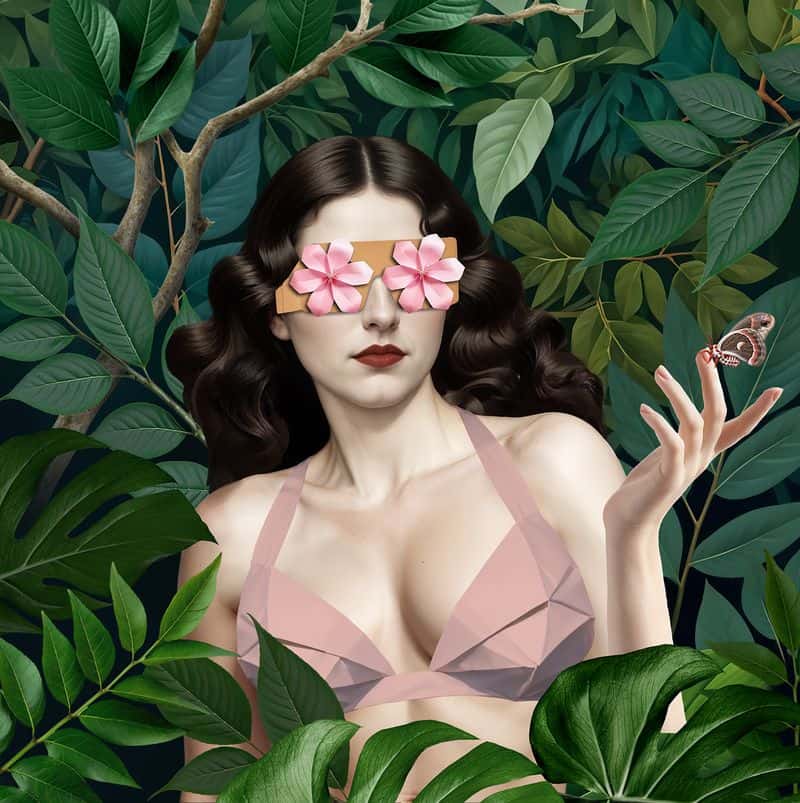
What is Karin Miller’s favourite part of creating an artwork?
It’s the moment when the magic starts to happen — when all the fragments I’ve been gathering suddenly find their place, and the work begins to breathe on its own.
Are there any pieces of your works that hold a special significance for you and what about it resonates with you the most?
Favorites change over time, but one that remains close to me is the girl with the iris tattoos. There’s a quiet intensity about her — fragile yet marked with strength. For me, she holds that balance of beauty and unease that I’m always searching for.
Can you share instances where your artwork has developed from unusual circumstances, and how did those moments influence the final piece?
Yes, often. Sometimes a concept derails completely and forces me into a new direction — and those works often end up more alive than the ones I meticulously planned.
How do you recharge creativity when you’re feeling uninspired?
I turn to ordinary things — reading, tending the garden, enjoying the company of my family, children, and friends. They remind me I am not only an artist but a person living a life, and that’s often where the spark returns.
What inspired your latest project?
My recent works are circling around silence and social media — the pressure to present, the burden of visibility, and the need for private dignity.
Karin Miller Website
Share this post
Anji Connell is an internationally recognised interior architect, garden designer and self-proclaimed nomad. Known for her fabulous persona and her even more exquisite taste in all things design. She regularly writes for a variety of International titles on subjects such as art, design, lifestyle and travel from her globe-trotting adventures.
She divides her time between London, Hong Kong and South Africa.
Read Next


